Apple Podcasts | Spotify
Your mind is going to be blown today 🤯 We’re talking about some website pages you likely didn’t even know you needed. These pages will give you a little SEO boost, and we’ll share all the details on why!
But first, did you notice that we rebranded Duo?? It’s liveeeee. Explore the website after listening to this episode! It’s the first time we’ve rebranded since we started this business, and it feels so good. We didn’t quite realize what a beast our website was. We have a lot of pages that we’ve slowly added over time… so wow, it was a massive undertaking. But we’re so happy with the result (AMAZING job as always, Court 😘)
So anyway, back to the episode. We’re sharing five website pages for SEO to have on your website.
5 Website Pages to Help Your SEO
1. Custom 404 Page
A 404 page is something you need and hope is never needed. A 404 page appears when someone clicks on a link that no longer exists on your website. You can read all about 404-page best practices in this blog!
So, back to the custom part. Many website platforms have a 404 page you can use, so you might not realize you can customize it. This is what our 404 page looks like:
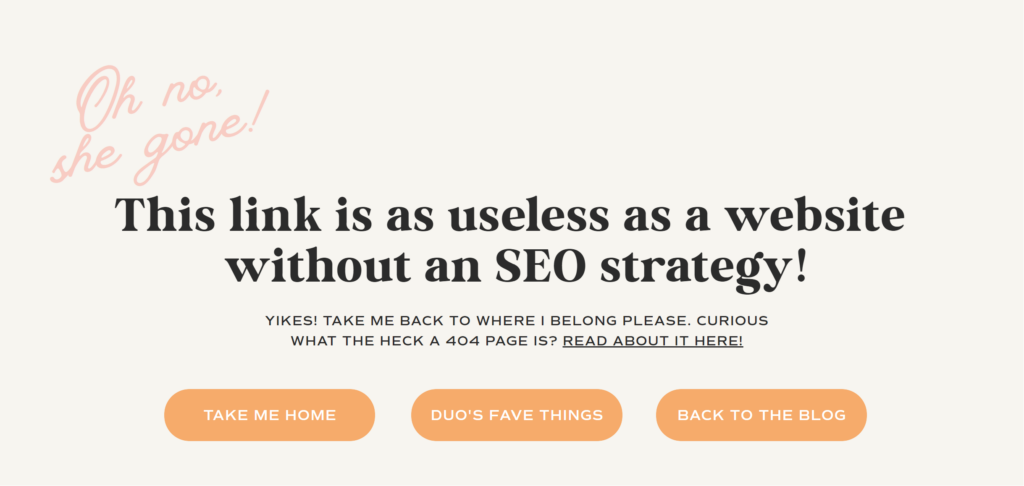
A good 404 page will tell you where to go next. Customized 404 pages allow you to control the narrative. You’re saying, “Oops, sorry. That link is no good, but maybe you were trying to get to these pages,” versus the standard dead-end link where you have to navigate back from where you just were. It should keep users on your website.
Against common belief, a broken link actually isn’t bad for your SEO. It isn’t a signifier that you’ll be dropped in search rankings. All it means is people will bounce off your page. If people leave your website, that is an indicator that your website isn’t performing well.
I have a unique client example to share. Allison Carter Celebrates used to run a party planning business. From her wild success in that industry, she shifted to a visibility coach. She helps people get media and PR opportunities, so it’s much more of a coaching role. Allison was getting TONS of traffic from her old blogs about party planning, but she didn’t want this kind of traffic anymore since she shifted to coaching.
So, we created a very unique 404 page. We removed all the old content that no longer resonated or served her. This new 404 page provides a great experience to someone who didn’t know she transitioned away from party planning. They understand they aren’t being misled. Here’s what it looks like:
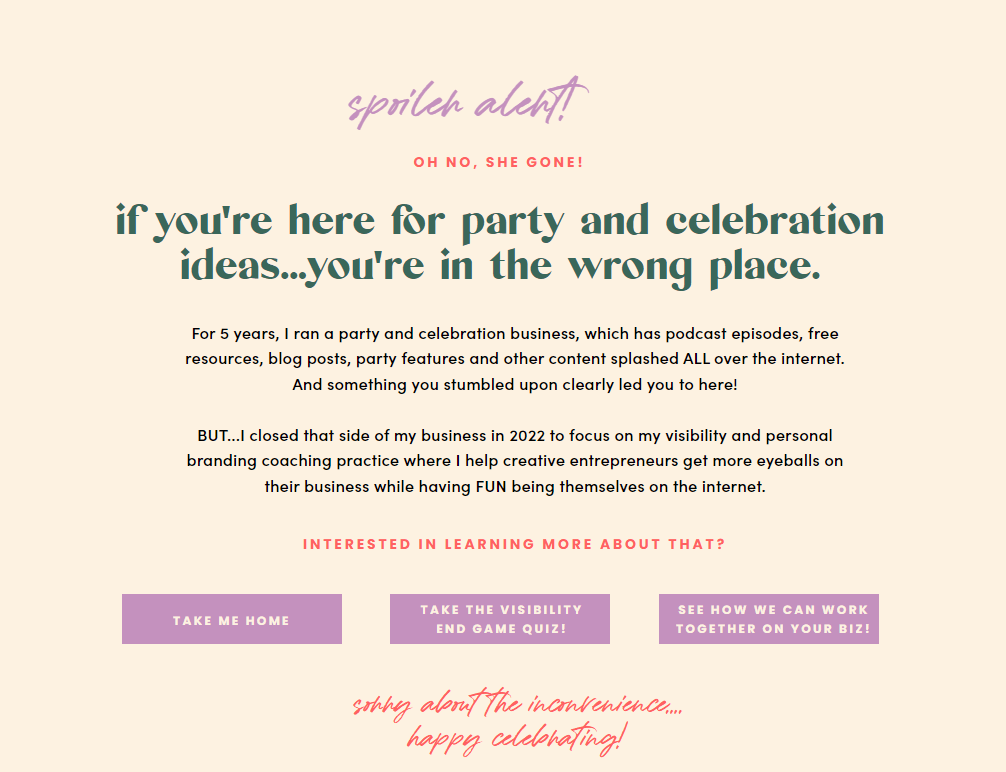
2. Blog Category Pages
Blog category pages are like mini landing pages! They allow the user to find blogs related to specific topics. These are our category pages:
These are our blog category buckets and what we love talking about! Since blog categories act like landing pages for your blogs, you can rank for these pages. People may be searching for things like ‘SEO resources’ or ‘SEO freebies’ or ‘SEO tips’, and our blog category page for SEO has a chance of ranking for these keywords as long as I’ve optimized it correctly.
The biggest issue with these is usually they aren’t optimized and have low word count. Remember to treat these pages like a landing page. You’ll want to provide extra content like a headline and mini paragraph because if you don’t have enough words on the page, a search engine won’t understand what the page is about. Don’t forget to optimize the page with an SEO title and meta description, too!
3. Opt-In Pages for Freebies and Newsletters
We love Flodesk. The pages on Flodesk are super easy to use and just finish to get out into the world. If you can use your own landing pages rather than their full page form, you will get the SEO credit.
Our Pinterest manager also told us this little nugget of wisdom – If your pins were linked to your domain rather than a Flodesk URL, you would see better performance. That made us realize all the other SEO implications these pages can have. These pins are driving traffic to a Flodesk URL, which is fine because they’re still getting a positive experience with us, and we’re growing our email list. But, we were losing out on potential traffic to our site, which has a massive impact on SEO.
Flodesk pages won’t appear in search results, but a landing page for a freebie would. Rather than create a full page form within Flodesk, create a page on your website so you can benefit from the traffic you worked so hard to earn. You can then embed the first name, last name, email, and subscribe fields from your Flodesk form onto your landing page. Now, you have an opportunity for people to find that page in search results.
4. Individual Service Pages
We get this question a lot… “Should I have a services page or break them out into multiple pages?” The answer is it depends… In terms of SEO, breaking them out is better. If you’re still exploring the services you enjoy offering, stick to one services page until you get more clarity on what you want to offer. If you have the clarity, we recommend breaking up your services into individual pages.
This was a shift for us from our last website! Having a page for each service you offer is a game changer. We now have a page for branding services and SEO services. It allows you to optimize for a single service vs. clumping them together. You can get hyper-specific with a unique headline, SEO title, meta description, and URL slug— all key things that help your SEO! We talk more about all this in our SEO on Tap course… get on the waitlist!
We also want you to understand that for a long time, we had a one-page website and we still grew every year. You don’t need to be adding a ton of pages at the same time and stressing yourself out. Take it one step at a time.
5. Digital Business Card
We use business cards for events we go to throughout the year. A lot of times, people want to follow us on Instagram, but then we’re lost in the sea of Instagram. Especially in the hustle and bustle of events, you’re being drowned with information, and it’s easy to get forgotten or lost.
So, we decided to create a cute little QR code on our business cards that led them to a custom website URL. It gives us the opportunity to track the data on this page and the demographics with Google Analytics.
It’s a hidden page on our website, and we don’t request indexing from Google on this page. We don’t want people to find it organically because it screws with our Google Analytics data from the events we go to. We want to know how people are coming to us and what they do after they land on our digital business card page. It gives us incredible insight into how that event went for us. Then, we can take that insight into the next event we’re at. The data is why this page is so important.
BONUS: Custom Zoom Page
How about one more page just for funsies… a custom Zoom page. It makes for a fun client experience and a personal interaction right from the get-go. This is what ours looks like:
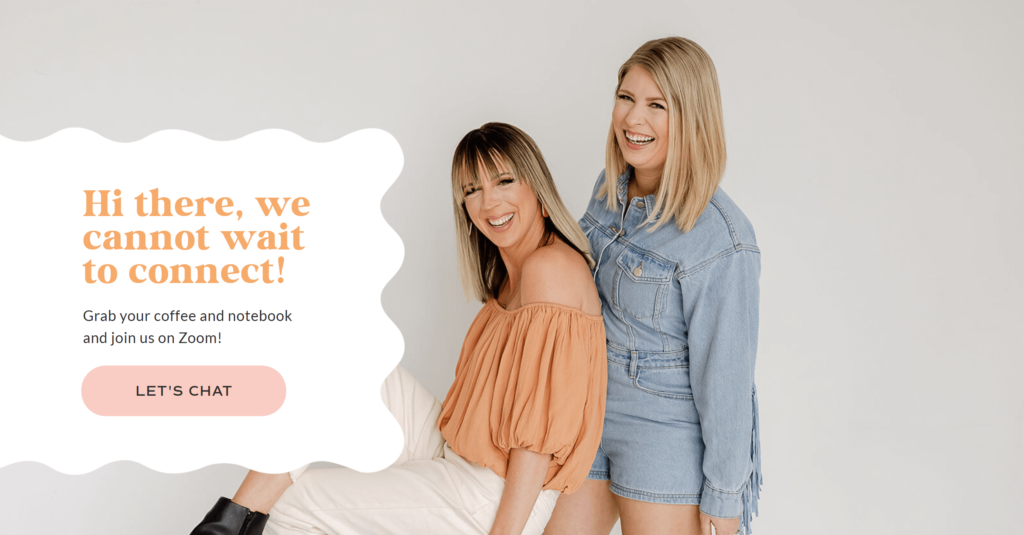
There you have it!
Five additional pages you can add to your website in 2024 to help give you a little SEO boost and make a deeper connection with your audience.
As always, we never want these episodes to increase your to-do list or add stress. So please don’t add these all at once. Take your time and add a couple throughout the year. Slow progress is still progress!
If you liked today’s episode on The Duo On Air Marketing Podcast, don’t forget to leave us a review & subscribe!
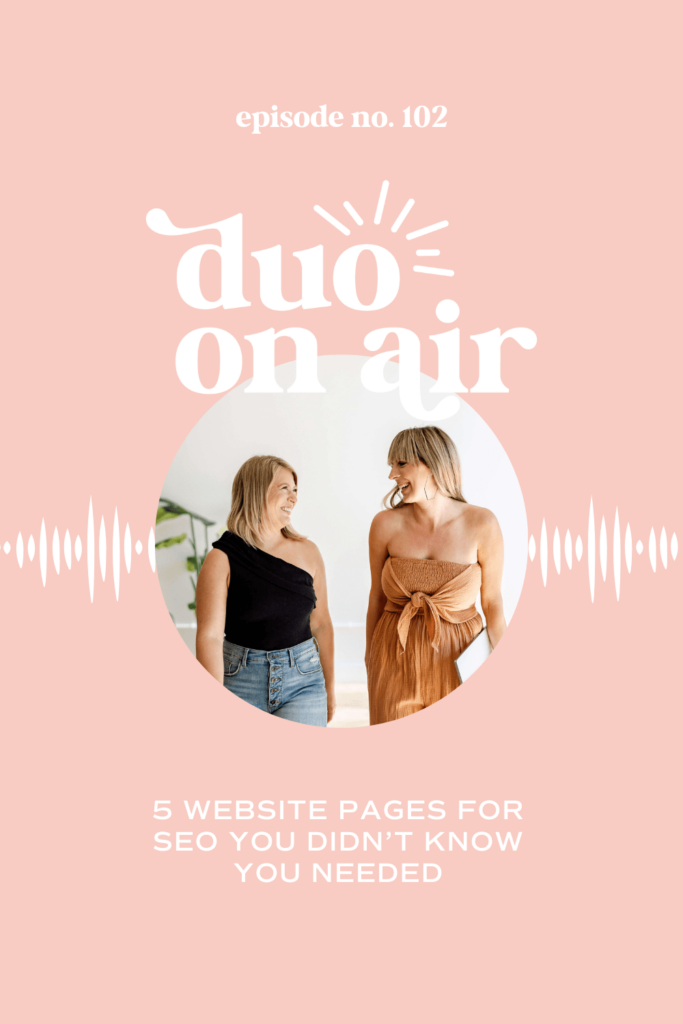
More From The Duo
Sign Up for Tuesday Tips and Sips Newsletter
Abbey Oslin and Courtney Petersen are Minnesota-based marketing experts, educators, and co-founders of boutique marketing agency Duo Collective, which specializes in SEO, social media strategy, and branding for small business owners and creative entrepreneurs. To learn more about Duo Collective, or to inquire about working with our team, head over to www.duocollective.com.
To inquire about being a guest on Duo On Air, please fill out this application form.
And to submit a topic or a question for next week’s episode, send us a DM on Instagram! See you on Monday!
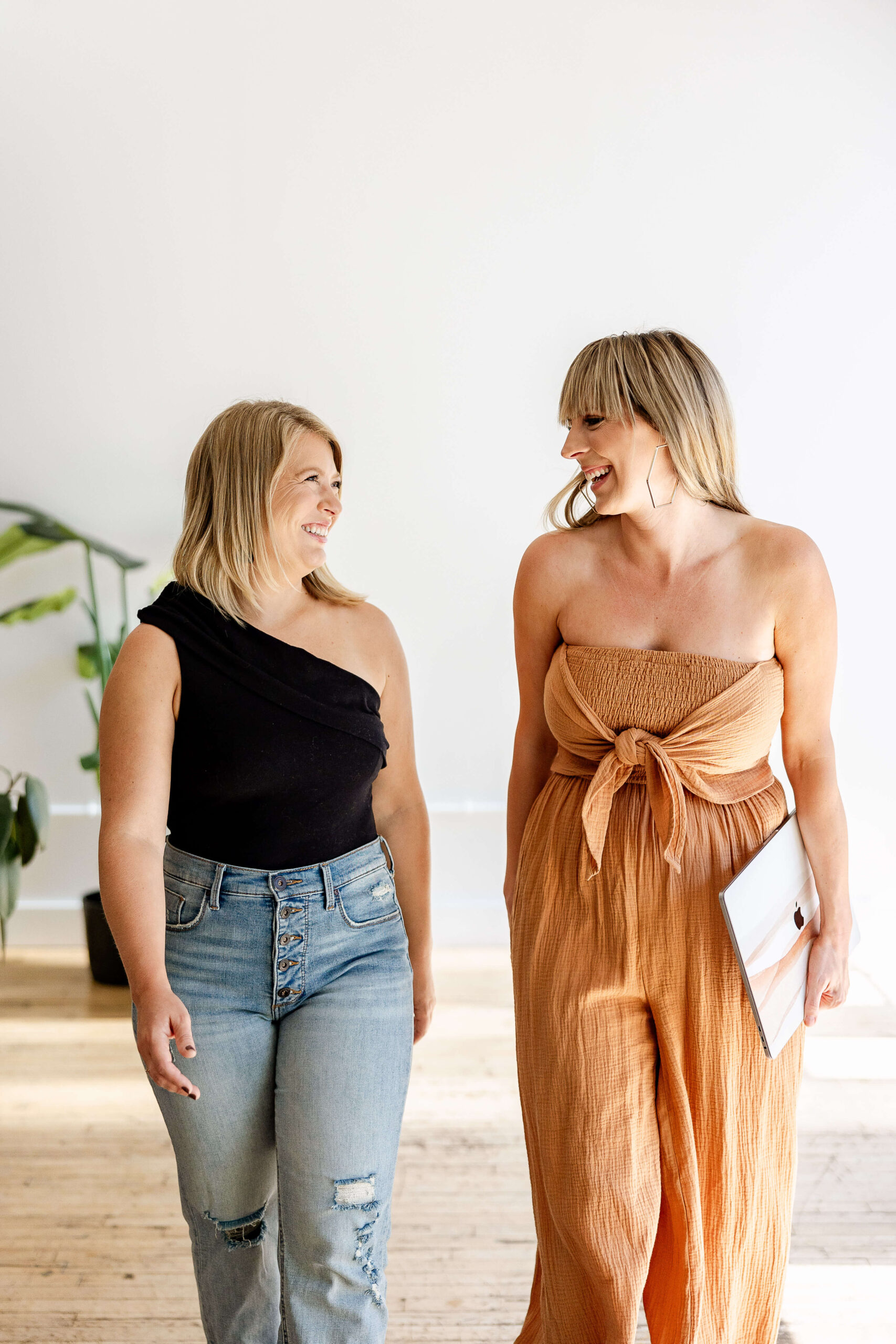
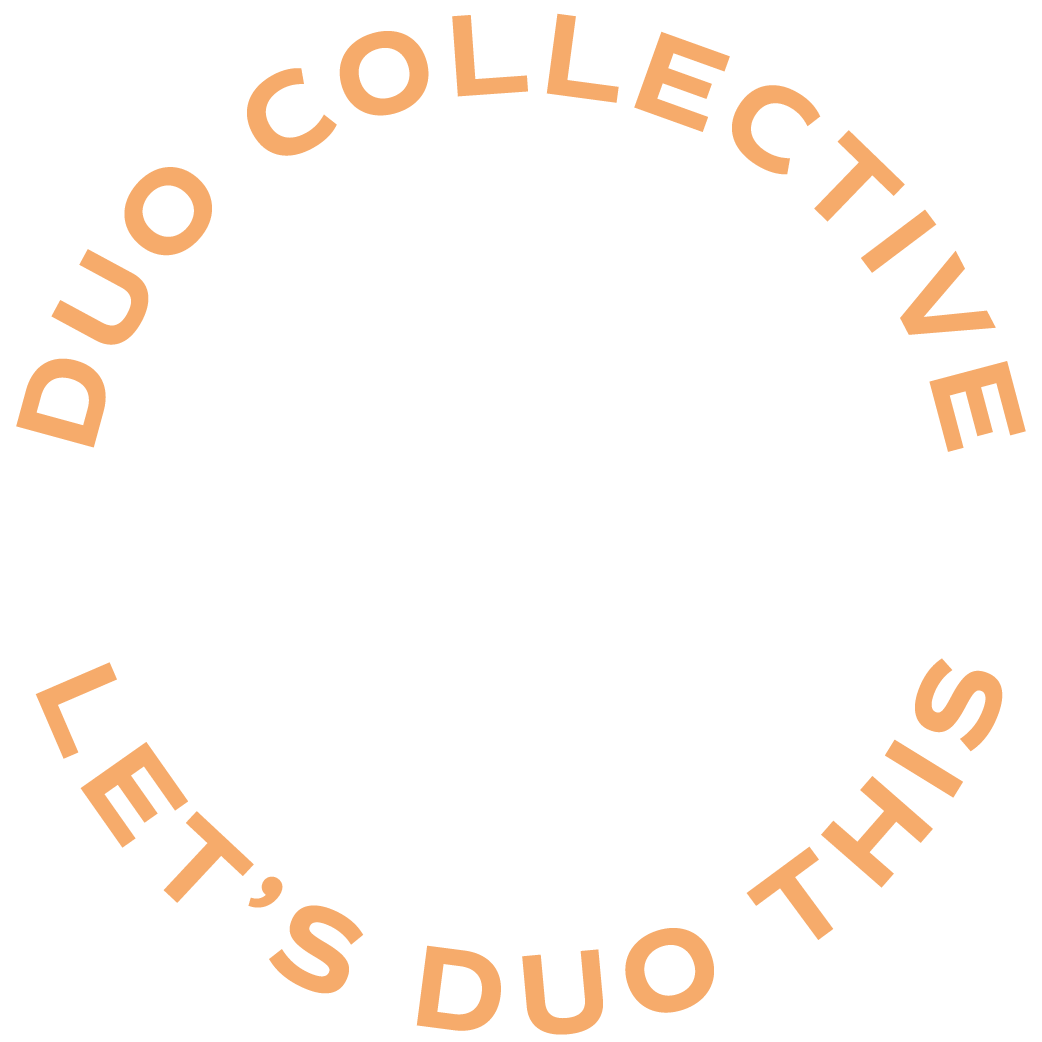
+ show Comments
- Hide Comments
add a comment